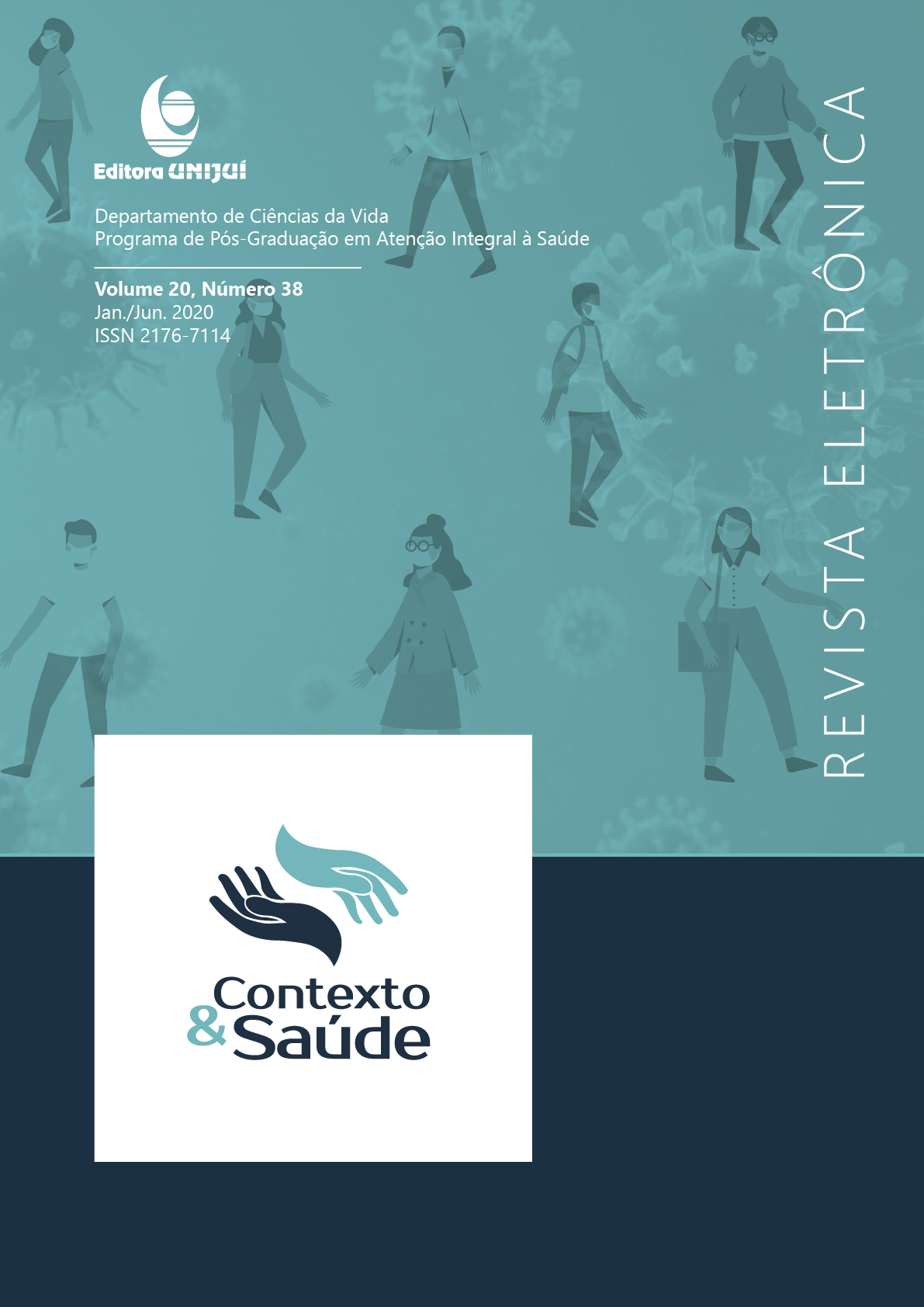EFEITOS DA RECUPERAÇÃO PASSIVA E ATIVA SOBRE A DOR E A FUNCIONALIDADE APÓS EXERCÍCIOS RESISTIDOS
DOI:
https://doi.org/10.21527/2176-7114.2020.38.163-169Keywords:
Exercise Therapy; Myalgia; Fatigue; Recovery of FunctionAbstract
Resistance exercise (ER) performed at high intensity results in the delayed onset muscle soreness (DOMS) and diminishes functionality. Different forms of recovery after exercise have been studied to alleviate discomfort and improve functionality. The aim of the present study was to evaluate the effects of passive (PR) and active (AR) recovery on DOMS and the functionality of physically active volunteers after RE session. The sample consisted of 15 volunteers, with a mean age of 24.2 (± 2.2) and BMI of 24.7 (± 2.5) kg/m2, submitted to ER protocol and the forms of recoveries. The RE sessions (squats, extension chair and leg press) consisted of 4 sets of 10 repetitions with 80% of the maximum load (1 week interval between evaluation and sessions). The DOMS was evaluated (Visual Analog Scale) 24 h, 48 h and 72 h after RE session. Functionality (muscle strength assessed by isometric peak torque, flexibility, power, agility, speed and fatigue strength) was assessed 30 min after the interventions (AR or PR). The AR was more efficient in reducing the DOMS in relation to the PR in the three evaluated moments (24 h: -1.3, 48 h: -1.3 and 72 h: -1.5 points; p < 0.005). AR improved approximately 9% of lower limb muscle strength compared to PR. The other functional variables showed no differences between recoveries. RA decreases DOMS and attenuates muscle strength loss after RE in physically active volunteers.Downloads
Published
How to Cite
Issue
Section
License
By publishing in Revista Contexto & Saúde, authors agree to the following terms:
The works are licensed under the Creative Commons Atribuição 4.0 Internacional (CC BY 4.0) license, which allows:
Share — to copy and redistribute the material in any medium or format;
Adapt — to remix, transform, and build upon the material for any purpose, including commercial.
These permissions are irrevocable, provided that the following terms are respected:
Attribution — authors must be properly credited, with a link to the license and indication of any changes made.
No additional restrictions — no legal or technological measures may be applied that restrict the use permitted by the license.
Notes:
The license does not apply to elements in the public domain or covered by legal exceptions.
The license does not grant all rights necessary for specific uses (e.g., image rights, privacy, or moral rights).
The journal is not responsible for opinions expressed in the articles, which are the sole responsibility of the authors. The Editor, with the support of the Editorial Board, reserves the right to suggest or request modifications when necessary.
Only original scientific articles presenting research results of interest that have not been published or simultaneously submitted to another journal with the same objective will be accepted.
Mentions of trademarks or specific products are intended solely for identification purposes, without any promotional association by the authors or the journal.
License Agreement (for articles published from September 2025): Authors retain copyright over their article and grant Revista Contexto & Saúde the right of first publication.

